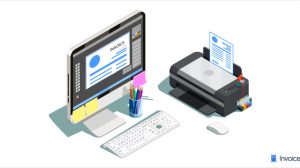Mobile apps have long gone beyond entertainment. Now, it is difficult to find an industry where mobile applications would not be used. They help improve the existing processes and provide wider access to the industry. This fully applies to the healthcare sector as well.
The healthcare industry will exist as long as society exists. Business people, developers, and investors are well aware of this. According to the research from Global Market Insights, the size of the digital healthcare market crossed the $106 billion mark in 2019, and by 2026, this value is expected to increase fivefold. With that in mind, developing a mobile app for the healthcare industry is not only a good idea but also a response to harsh times caused by events such as the COVID-19 pandemic.
Two kinds of apps
Let’s explore purrweb.com, the website of a mobile development company. If you look through their portfolio, you will stumble upon a few healthcare-related apps — Lytic Health, Sleep App, Fitforce, etc. All these apps can be divided into two main categories — applications for health service providers and applications for ordinary people. Considering this, the obvious purpose of applications in both categories becomes clear. The first type is used by specialists in order to simplify their work, provide access to customer databases or prescriptions, and more. Apps for ordinary people help them perform basic self-check, monitor their health indicators, and so on.
Obviously, the difference between these two categories is significant. Hence, it turns out that not only their purpose but also the requirements for their development differ. This includes the list of necessary features and the approach to the development process as a whole.
The development process
Once the type of app has been defined, the development process begins. However, this concept involves a lot more than just coding. Therefore, let’s consider all the stages that specialists go through on the way to creating an application.
Decide on the app’s purpose
The healthcare industry covers an extremely wide range of different sub-sectors. Therefore, it is necessary to decide which problem your app will solve.
There is a huge number of health-related applications on the market and of course, not all of them are unique. Many entrepreneurs analyze the flaws of competitors and release a slightly improved product. Others rethink how companies market themselves and come up with new strategies.
- Most apps target patients. Weight loss and fitness apps are leading by a wide margin. This has been the case before, but now, when gyms are closed or access to them is limited, such apps are even more popular.
- The next popular sub-category is applications for women’s health. In general, men are less concerned about their health, less inclined to visit doctors and trust the indicators of mobile applications. Of course, this is a slightly stereotyped opinion. Women’s health also encompasses pregnancy-related issues, hence the popularity of the niche.
- Finally, we can highlight applications for improving biorhythm. These apps help people improve their sleep, practice meditation, and get rid of depressive thoughts.
Study your audience
Now, you need to accurately specify the target audience. It is important to understand that health is an extremely sensitive and personal issue. The customer’s decision on whether to use such an application will surely go through several stages. So, carefully study your audience and narrow it down in order to develop the most appropriate strategy for its promotion.
Decide on the features
Having accurately determined the specifics of your application, you can proceed with the list of features. Below we will cover some of the most commonly used ones. But, if you have come up with a unique solution or feature, we strongly recommend testing it in the real market using the MVP model. Do not develop a full-fledged product right away.
- Monitoring. That’s an absolute must-have for most applications, even if the specifics are different. Users expect that they will be provided with 24/7 updates regarding their pressure, heart rate, body temperature, and so on.
- Appointments. It implies the ability to choose a doctor from a specific establishment, view a schedule, make an appointment, look through the list of consultations, check ratings and reviews, and so on.
- Telemedicine. It is not a feature, but rather a separate sub-sector of healthcare. It allows communication with a specialist at a distance. However, apps often feature options such as a video call for users to consult a specialist or get a basic diagnosis.
- Payment. It is a necessary feature if the application allows ordering pills or paying for the services of a specialist.
- Notifications. They are used in healthcare apps to remind the user of an appointment or that it’s time to take pills.
Ensure security and privacy
The next important step is to think carefully about the security of user data. As we mentioned above, the issue of health is extremely personal, and therefore, users prefer keeping any data they share secret.
In addition, a healthcare application must comply with specific laws. For example, in the United States, such an application must comply with the HIPAA act. HIPAA sets standards for how patients’ personal data is stored. Compliance with all the rules specified in the act is necessary for an app to be distributed in the USA. Follow this GitHub link to see a complete guide on how to develop an application that will not violate the established rules.
Decide on monetization
Finally, you need to decide what type of monetization will be chosen for your application. Since healthcare apps are often free to download, they are monetized in the following ways:
- Advertising. It is effective but repels users. Also, ads should be relevant and in one way or another relate to healthcare. Nobody wants to see an ad for a pizzeria in a weight loss app.
- Subscription model. It depends on the specifics of the application. If monetization is performed via a subscription, then you need to decide what features and bonuses users will receive in return.
- In-app purchases. The product owner can charge a small percentage for the convenience of buying pills and drugs through the app.
Final words
As you can see, there are many questions that need to be answered before proceeding with the actual coding. The segment of mobile healthcare applications is specific. And those who aim to enter this market have to make comprehensive preparations.
On the other hand, an efficient, workable, and truly useful health app is destined to be in high demand among customers. It will be used by a huge number of people willing to pay for its perks, that’s for sure.








